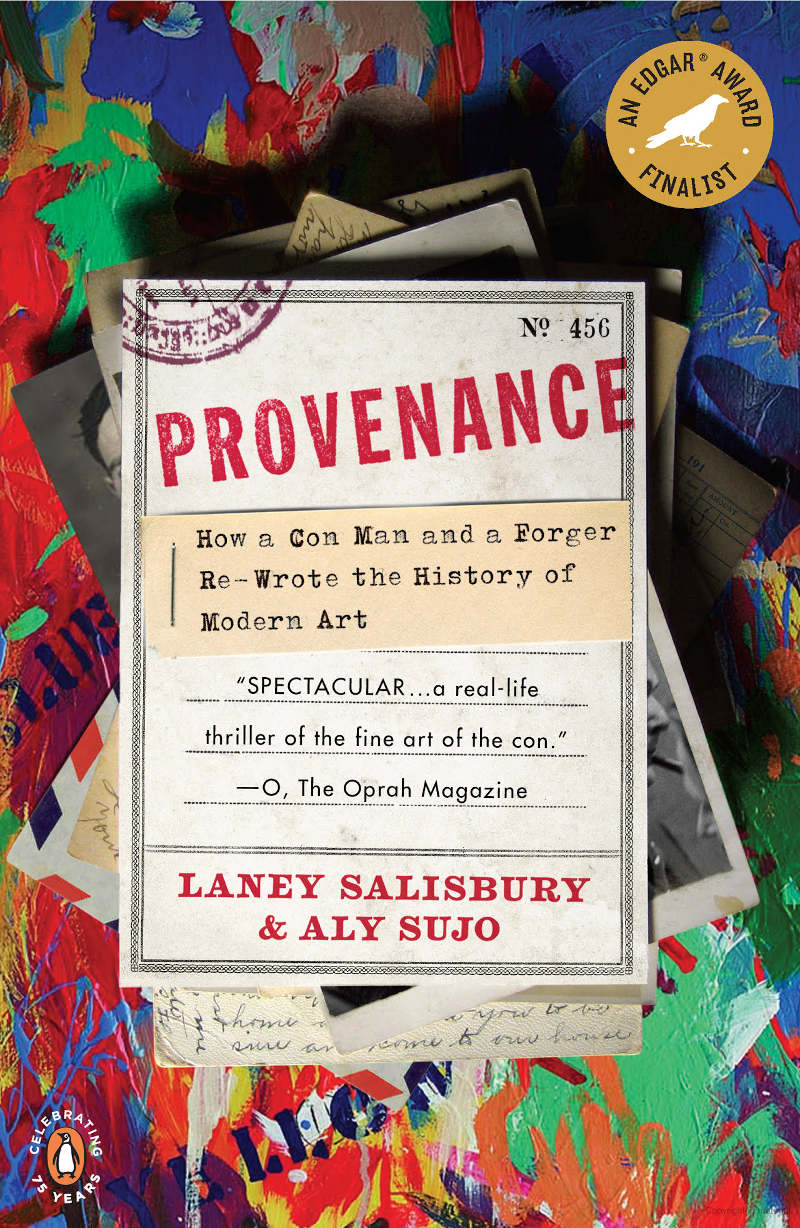 Provenance
Provenance
By Laney Salisbury & Aly Sujo
The grand moment of the reception finally arrived. Two Tate conservators wearing white gloves came in carrying a pair of five-foot-tall paintings jointly titled Spring Woodland. The works were beautifully composed, semiabstract figures resembling birds and vegetables, set against an electric-blue background. Conversation stopped as everyone at the table acknowledged the gifts. There was a moment of respectful silence.
"Ahh, the Bissières, how lovely," someone said, in a voice barely above a whisper.
Myatt was stunned. He had painted the two "Bissières" himself just two weeks before.
John Myatt was at somewhat of a low ebb when he met John Drewe. Having peaked early with a minor one-hit wonder1979's Silly Games, Myatt was an impoverished solo-father when his side gig of painting cheap copies of famous paintings to amuse knowing customers brought him to Drewe's attention. Fabulously well-connected and charming, Drewe was wanting more than a couple of cheap knock-offs, he saw a much more lucrative path in forgery.
So begins an entertaining and eye-opening dive into the strange world of late 20th century London art, where new money sloshed against the breakwaters of establishment taste and tradition. There were fortunes changing hands over small pieces of stretched canvas and demand was outstripping supply. What the market needed was some new old classics and Drewe, armed with Myatts ability, was in a position to provide.
The crux of Drewe's scheme was not the paintings themselves, which were mostly merely competentAnd sometimes not even that, some were painted with house paint instead of period-appropriate oils. Nobody seemed to care., but carefully manufactured provenance - each painting had a fake paper trail spun out of nothing by Drewe. His greatest innovation was to gain access to various archivesMost notably, at the Tate Modern and plant evidence of Myatt's paintings being exhibited and sold decades before they were created. Even the archives concerned with security were only the lookout for people stealing things, not actually bringing stuff it.
Of course it all had to end somewhere. Myatt was always uneasy with his role as a master art forger and Drewe's castle of lies would eventually come crashing down. At it's core, Provenance is a character study of John Drewe, a larger than life figure who strides through the story like he was in charge of the world. Salisbury and Sujo seem to have interviewed nearly everyone he ever came in contact with, and even those who have reason to hate himAlmost everybody by the end of the story carry a smidgen of grudging respect.
What emerges is a picture of an amazingly charming, gifted, yet thoroughly amoral man who used what little influence he had to talk his way into the two things he craved, unearned wealth and status. I would be lying if I said that I didn't enjoy reading about an outsider pilling the wool over the stuffy art world's eyes, but it is also clear that despite his charm, Drewe was a total arsehole who cruelly used nearly everyone he met.
Endlessly fascinating and unfolding like a crime film, complete with thrilling escapes and a satisfying ending, Provenance is one of the more entertaining non-fiction books I have read. Highly recommend.
John Myatt was jailed for his part in the scheme but has made good since with a career producing "genuine fakes". His gallery of work is worth checking out.